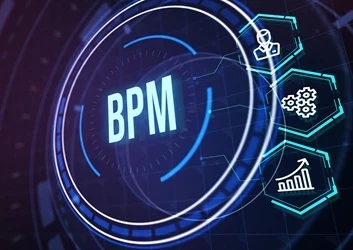How to harness the power of process innovation
Add bookmarkThis article is part of a series leading up to PEX Network's upcoming BPM Summit, Europe event taking place this June in Amsterdam where Janne Ohtonen will be hosting a workshop. To find out more about the event, please click here.
Process innovation – changes to the way our processes work - is important to all organisations, because it enables you to do things in new, better and often exciting ways. So, how do we make process innovation systematic?
We often change our processes in response to a problem. We identify that something isn’t working as it should – it’s taking too long or costing too much or producing too many defects – and we work to find a solution.
In my opinion, though, this is too late. The time to repair a roof is when the sun is shining, as John F. Kennedy once said. Our goal should be to have a culture of process innovation built into the organisation, so that it is not a one off project, but natural way of improving the organisation.
All employees need to feel that it is part of their job to constantly come up with new ways of doing things to make them better so that process innovation becomes just a way of doing business.
So how can you achieve this? Innovation must become a core part of your leadership agenda. Training employees on how to innovate processes becomes the vehicle through which you can spread the methods and ways of thinking. Then the corporate culture must continue to reinforce the message. On a practical level, maybe this means starting each day with a discussion of what we could do better.
The second important factor for harnessing the power of process innovation is not to be penalized for failures. This will only discourage the risk-taking needed for the next important process advancement. Best practices are easy to see and test, because everyone else is already using them. That will not bring competitive advantage or real process innovation. Focusing on best practises may lead to a situation where a dramatic process innovation idea will lead people to doubt whether it will work.
You can test dramatic innovations to a point, but there will come a time, when it just needs to be tried and seen. Most of the times those innovations will succeed when well thought out, but sometimes they may also fail and that is something we need to cope with. It is more fruitful to focus on next practices, instead of best practices.
"I have not failed 700 times. I have not failed once. I have succeeded in proving that those 700 ways will not work. When I have eliminated the ways that will not work, I will find the way that will work." – Thomas Edison, father of mass production light bulbs.
A future orientation and outcome-based thinking are very beneficial to process innovation. It is unlikely to succeed if no one invests time in getting better both with processes and innovation. Usually we are too busy with running our daily lives, leaving little time to grow professionally and personally.
We can only innovate ideas within the scope of what we know and how we think, so we need to seek ways to expand our ways of thinking. One very powerful and practical technique is outcome-based thinking. If you focus on what is it that you want to achieve, then your mind will stay focused on the future and find ways to realize those aspirations. Everyone in your organization needs to have a clear grasp of where you need to go. That is how they know what has value and what is irrelevant.
The question is that will some process innovation idea, if implemented, help move you closer to the outcomes you have specified?
Let’s take an example of process automation innovation where the outcome hasn’t really been thought through. In certain parts of the United Kingdom, rubbish is placed in council-provided bags so that the rubbish collectors will know that the recycling fee has been paid. Householders need to go to the council offices in order to pay their fee and collect the bags.
At some point they decided to automate part of that process. Councils installed machines next to the council doors, where you choose the number of rubbish bags you want and pay for them. After you have paid for the bags, though, you get a receipt that you need to take to the reception desk and someone will give you the bags.
But what was the point of automating part of the process when at the end of the day delivering the rubbish bags to the customers is still traditional person-to-person interaction and probably results in additional waiting time for the customer as they have to queue for two different parts of the process? What do you think was the outcome the process optimisation people in that council were thinking about exactly?
To harness the power of process innovation, you should always begin with a goal in mind. That goal needs be to have a process innovation culture build into the organisation, so that it becomes domain of all, not just selected few. Crowdsourcing will work for process innovation, if you give most of the employees a chance to participate it.
The second important factor for harnessing the power of process innovation is not to be penalized for failures. People need to have possibility to try new things and get proper, constructive feedback from those trials. Also, a future orientation and outcome-based thinking are crucial to process innovation. They will help you to think about and realize the outcomes you want to create through process innovation endeavours.
What tips could you share with us to harness the power of process innovation? And maybe you could share with us your most interesting experiences?
[eventPDF]


























